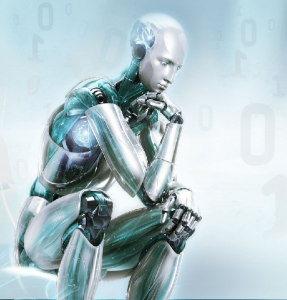 Like the Industrial Revolution of old, 3-D printing is a formidable new type of manufacturing technology that is sweeping the world and bringing with it the promise of considerable changes in the way we think about the production of goods and services.
Like the Industrial Revolution of old, 3-D printing is a formidable new type of manufacturing technology that is sweeping the world and bringing with it the promise of considerable changes in the way we think about the production of goods and services.
So what exactly does this new technology mean for the world of manufacturing, for commerce, and for retail? We’ve briefly touched on some possibilities already. But let’s dig below the surface to consider more specific real world changes that 3-D printing will spawn in the next 3-5 years?
3-D Printing and the Future of Manufacturing
One recent post in the Harvard Business Review blog asks the question, “Will 3-D Printing Cause Traditional Manufacturing to Collapse?” The idea is fascinating on many levels and speculates about what happens when 3-D printing overtakes current models and provides more formidable speed to market practices.
For example, consider the typical multi-stage supply chain process: idea/design, prototype, manufacture, assembly, distribution, warehouse, retail, end-user. Now anyone with a low-cost 3 D printer can take a digital design and spin it into a prototype or product. So the natural question here is what implications will 3-D printing have for businesses in the supply chain?

One proposal cited in the article above is that 3-D printing will lead to a new type of manufacturing ecosystem that will involve the emergence of “decentralized” local hubs capable of quickly producing goods for specific markets to test which will be most successful. In this scenario, you might see a company such as Nike developing a version of a running shoe line specific to the needs of New York city consumers. Or consider Samsung developing a smartwatch that offers customized features for the Boston population based on crowdsourced ratings.
Another possibility is that smaller businesses will be enabled to partner with large organization who need outsourcing help in developing prototypes and models for sponsored corporate research projects.
While the scenarios of the future are unclear, what is certain is that 3-D printing will democratize manufacturing much like the PC in the 1980s changed the landscape of traditional computing.
3-D Printing and the Era of “Creative Commerce”
As manufacturing goes, so goes the world of business. By disrupting the traditional production cycle of goods and services, 3-D printing can potentially become one of the biggest game changers of our time.
One example of this is the emergence of 3-D copier centers where consumers can go and submit their digital files and have high end products printed not just in plastic but in other materials such as ceramic or stainless steel. Even major businesses are starting to offer these services. In 2013 the office supply chain Staples became the first retailer to sell a 3-D printer over the counter and just last fall opened a 3-D printing service in the Netherlands and Belgium.

It’s already possible to 3-D print everything from toys to automobile parts to tools. Before we know it most major brand stores will need to offer in-store or online printing services for their products to keep up with customer demand. Imagine going to Macys.com and selecting a shoe that you like but instead of ordering it online you download a digital file that gets sent to the local Staples 3-D printing center, or even better yet, to your own 3-D printer. If this scenario seems far-fetched, think again. This is the world that we’re facing!
3-D Printing and “Backyard” Retail
The notion of taking manufacturing production from the assembly line to the backyard or garage has huge implications for the world of retail. As one source points out, “For $1,299 . . . anyone can now buy a 3D printer, hook it up to a wi-fi network, and begin downloading files that will turn into real objects.” Prototyping and manufacturing has always been expensive. But now imagine being able to scan objects with your iPad and then send them to your 3-D printer. The sky is really the limit – shoes, clothing, jewelry, toys, tools, food – you name it and the possibility exists that it can be scanned and printed. Suddenly, the one person retail operation becomes a real possibility for the future.
Time will tell, but all signs suggest that this transformation will exert significant ripple effects on the entire industry and significantly improve opportunities for small businesses to compete and play a more dominant role in the future of retail.









